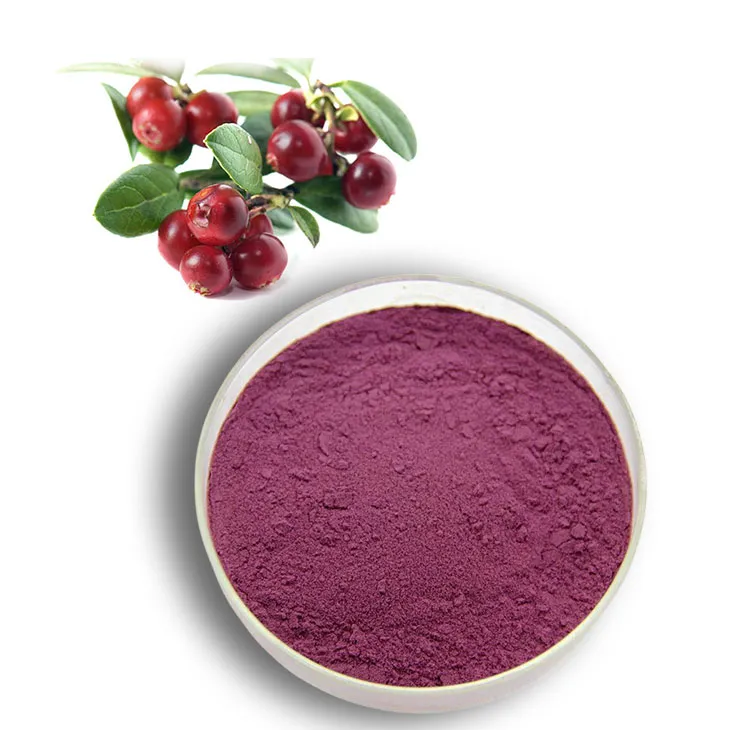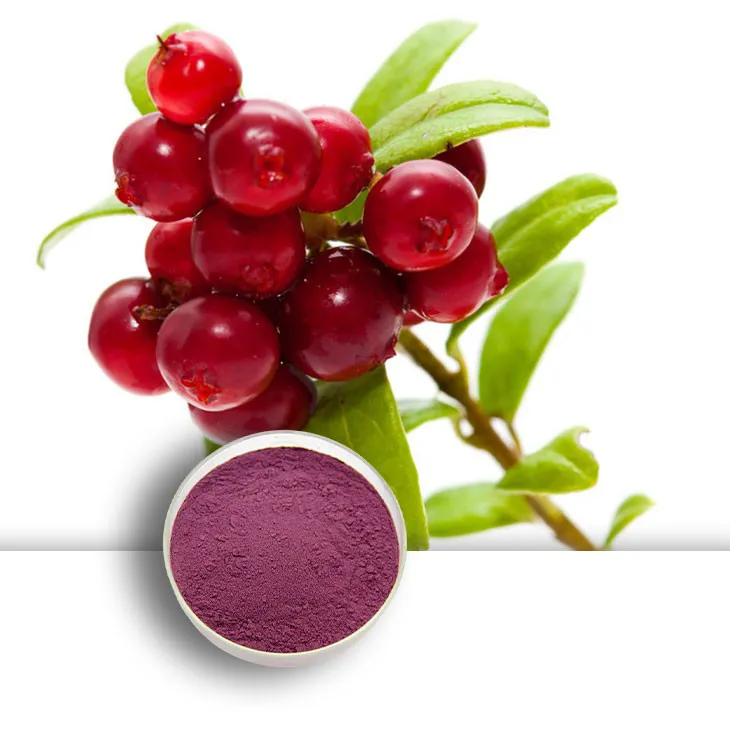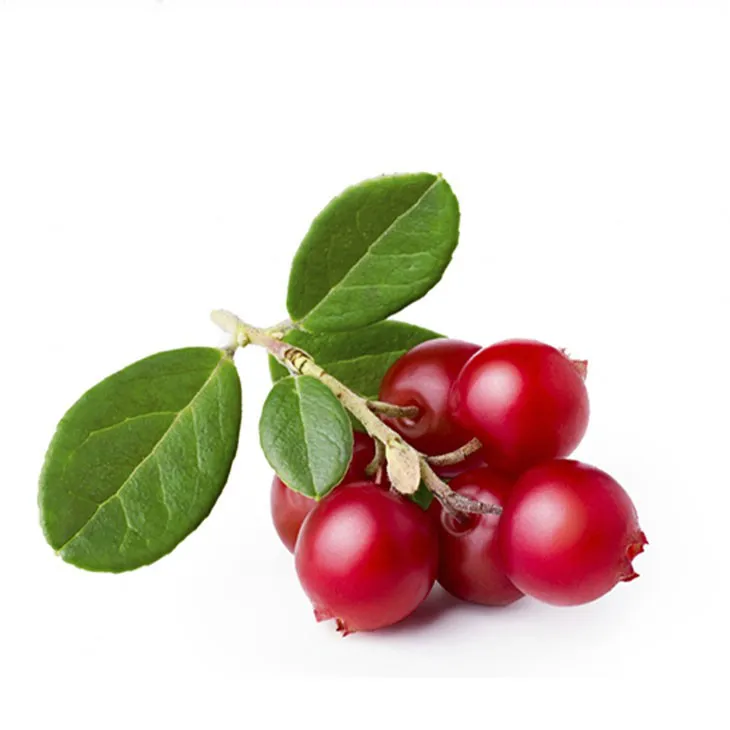- 0086-571-85302990
- sales@greenskybio.com
How to make powder from bilberry extract.
2024-11-30

1. Introduction
Bilberries are rich in various beneficial compounds such as anthocyanins, flavonoids, and other antioxidants. Bilberry Extract powder has a wide range of applications in the fields of food, medicine, and cosmetics. This article will explore in detail how to make high - quality powder from Bilberry Extract.

2. Raw Material Selection
2.1 Quality of Bilberries
Selecting high - quality bilberries is crucial for the production of good Bilberry Extract powder. The bilberries should be ripe, free from diseases and pests, and preferably organically grown. Ripe bilberries contain a higher concentration of active ingredients. For example, bilberries harvested at the peak of their ripeness will have a greater amount of anthocyanins, which are the main bioactive components we are interested in for the extract.
2.2 Source of Bilberries
The source of bilberries also matters. Bilberries from different regions may vary in their chemical composition due to differences in soil, climate, and cultivation methods. For instance, bilberries grown in cooler climates with well - drained soil may have a more favorable composition. It is advisable to source bilberries from reliable suppliers who can provide information about the origin and cultivation conditions of the berries.

3. Extraction Methods
3.1 Solvent Extraction
Solvent extraction is one of the most common methods for obtaining bilberry extract.
-
First, select an appropriate solvent. Ethanol is a popular choice as it is effective in extracting the active compounds from bilberries while being relatively safe and easy to handle. The typical concentration of ethanol used can range from 50% to 80%.
-
Crush the bilberries into a pulp. This can be done using a blender or a mechanical crusher. Make sure the bilberries are thoroughly crushed to maximize the surface area for extraction.
-
Mix the crushed bilberries with the selected solvent in a suitable container. The ratio of bilberries to solvent can vary depending on the desired concentration of the extract, but a common ratio is 1:5 (bilberries:solvent) by weight.
-
Allow the mixture to soak for a period of time. This soaking period can range from several hours to a few days. During this time, the active compounds in the bilberries will dissolve into the solvent. Stir the mixture occasionally to ensure even extraction.
-
After the soaking period, filter the mixture to separate the liquid extract from the solid residue. This can be done using a filter paper, a filter funnel, or a more advanced filtration system such as a vacuum filtration setup.
3.2 Supercritical Fluid Extraction
Supercritical fluid extraction is another option, especially for obtaining high - quality and pure bilberry extract.
-
Carbon dioxide (CO₂) is the most commonly used supercritical fluid in this process. CO₂ is non - toxic, non - flammable, and can be easily removed from the extract after the process.
-
The bilberries are placed in an extraction vessel. The supercritical CO₂ is then pumped into the vessel at high pressure and a specific temperature. The supercritical state of CO₂ has properties that allow it to effectively extract the active compounds from the bilberries.
-
After the extraction, the pressure is gradually reduced, which causes the CO₂ to return to its gaseous state and separate from the extract. This leaves behind a pure bilberry extract.

4. Powder - making Techniques
4.1 Spray Drying
Spray drying is a widely used method for converting bilberry extract into powder.
-
First, the bilberry extract obtained from the extraction process needs to be pre - treated. This may involve adjusting the concentration, pH, and viscosity of the extract to make it suitable for spray drying. For example, if the extract is too viscous, it may be diluted with a suitable solvent or carrier.
-
The pre - treated extract is then pumped into a spray dryer. Inside the spray dryer, the extract is atomized into fine droplets through a nozzle. This can be achieved using different types of nozzles, such as pressure nozzles or rotary nozzles.
-
Hot air is then introduced into the spray dryer. The hot air comes into contact with the fine droplets of the extract. The heat causes the solvent in the droplets to evaporate rapidly, leaving behind solid particles of the bilberry extract in the form of powder.
-
The powder is then collected at the bottom of the spray dryer. The collected powder may need to be further processed, such as sieving to remove any large particles or agglomerates.
4.2 Freeze Drying
Freeze drying is another effective method for making bilberry extract powder.
-
The bilberry extract is first frozen. This can be done by placing the extract in a freezer or using a specialized freezing apparatus. Freezing the extract helps to preserve the structure and activity of the active compounds.
-
Once frozen, the extract is placed in a freeze - dryer. In the freeze - dryer, a vacuum is applied. Under the vacuum, the ice in the frozen extract sublimates directly from the solid state to the gaseous state without passing through the liquid state.
-
As the ice sublimes, the remaining solid material forms a porous structure. This porous structure gives the freeze - dried bilberry extract powder good solubility and rehydration properties.
-
Finally, the freeze - dried powder is collected and can be packaged for storage or further use.
5. Quality Control
5.1 Assessing the Purity of the Powder
Purity is an important aspect of bilberry extract powder quality.
-
Chromatographic techniques such as high - performance liquid chromatography (HPLC) can be used to analyze the composition of the powder. HPLC can separate and quantify the different active compounds in the powder, such as anthocyanins. This helps to ensure that the powder contains the expected levels of these beneficial compounds and is free from contaminants.
-
Other methods like spectroscopy can also be employed to detect impurities or to confirm the identity of the compounds present in the powder.
5.2 Determining the Solubility and Bioavailability
The solubility and bioavailability of the bilberry extract powder are crucial for its effectiveness in various applications.
-
Solubility tests can be carried out by adding a known amount of the powder to a specific volume of solvent (such as water or an appropriate buffer) and observing the dissolution behavior. A highly soluble powder will dissolve quickly and completely, which is desirable for applications such as in liquid formulations.
-
Bioavailability can be studied using in - vitro or in - vivo models. In - vitro models can simulate the digestion process to assess how well the active compounds in the powder are released and absorbed. In - vivo models, such as animal studies, can provide more comprehensive information about the bioavailability of the powder in a living organism.
6. Packaging and Storage
6.1 Packaging Materials
Appropriate packaging materials are essential for protecting the bilberry extract powder from degradation.
-
Opaque, airtight containers are preferred. Light and air can cause oxidation of the active compounds in the powder. For example, aluminum - lined pouches or amber - colored glass bottles can be used. These materials can block light and prevent air from entering, thus maintaining the stability of the powder.
-
The packaging should also be moisture - proof. Moisture can cause the powder to clump or deteriorate. Desiccants can be added to the packaging to absorb any moisture that may enter.
6.2 Storage Conditions
Proper storage conditions are necessary to ensure the long - term quality of the bilberry extract powder.
-
The powder should be stored in a cool, dry place. High temperatures can accelerate the degradation of the active compounds. A temperature - controlled storage area, such as a refrigerator or a cool cellar, is ideal.
-
It should also be stored away from strong odors. Bilberry extract powder can absorb odors from its surroundings, which may affect its quality and flavor.
7. Conclusion
Making powder from bilberry extract involves careful selection of raw materials, appropriate extraction methods, and efficient powder - making techniques. Quality control measures, proper packaging, and storage are also crucial to ensure the production of high - quality bilberry extract powder that can be used in a variety of applications in the food, medicine, and cosmetics industries.
FAQ:
Q1: What are the key factors in selecting raw materials for bilberry extract powder?
When selecting raw materials for bilberry extract powder, several factors are crucial. Firstly, the quality and freshness of the bilberries matter. Fresh, ripe bilberries are preferred as they contain a higher concentration of active compounds. Secondly, the source of the bilberries should be considered. Organic bilberries are often a better choice as they are less likely to contain pesticides or other contaminants. Additionally, the variety of bilberry can also impact the quality of the extract powder, with some varieties known for having higher levels of specific beneficial components.
Q2: What are the common extraction methods for bilberry extract?
There are several common extraction methods for bilberry extract. One method is solvent extraction, where solvents like ethanol or water are used to dissolve the active compounds from the bilberries. Ethanol extraction is often preferred as it can extract a wide range of compounds effectively. Another method is supercritical fluid extraction, which uses supercritical carbon dioxide. This method has the advantage of being more environmentally friendly and can produce a purer extract. Maceration, which involves soaking the bilberries in a solvent for an extended period, is also a traditional extraction method.
Q3: How does the powder - making process work after extracting bilberry extract?
After extracting the bilberry extract, the powder - making process typically involves several steps. First, the extract is concentrated to remove excess solvent if necessary. Then, it may be dried using methods such as spray drying or freeze - drying. Spray drying involves spraying the extract into a hot air chamber, where the solvent evaporates quickly, leaving behind a fine powder. Freeze - drying, on the other hand, freezes the extract first and then sublimates the ice, resulting in a powder with a relatively intact structure of the active compounds. After drying, the powder may be further processed to ensure a uniform particle size and quality.
Q4: What quality control measures are important in making bilberry extract powder?
Quality control in making bilberry extract powder is essential. Firstly, the raw materials should be tested for contaminants such as pesticides, heavy metals, and microbial contaminants. During the extraction process, the concentration of the active compounds should be monitored to ensure consistency. After powder - making, the powder should be tested for its physical properties such as particle size distribution, solubility, and moisture content. Chemical analysis to confirm the presence and quantity of key active compounds like anthocyanins is also necessary. Additionally, packaging should be designed to protect the powder from moisture, light, and air to maintain its quality over time.
Q5: What are the potential applications of bilberry extract powder?
Bilberry extract powder has several potential applications. In the food industry, it can be used as a natural colorant due to the presence of anthocyanins, which give a purple - red color. It can also be added to functional foods and dietary supplements as it is rich in antioxidants. In the pharmaceutical and cosmetic industries, bilberry extract powder may be used for its potential health benefits such as improving vision, reducing inflammation, and protecting skin from oxidative stress. Additionally, it can be used in research for studying the biological activities of bilberry - related compounds.
Related literature
- The Extraction and Utilization of Bilberry Compounds"
- "Advanced Techniques in Bilberry Extract Powder Production"
- "Quality Assurance in Bilberry - Based Products: From Extract to Powder"
- ▶ Hesperidin
- ▶ citrus bioflavonoids
- ▶ plant extract
- ▶ lycopene
- ▶ Diosmin
- ▶ Grape seed extract
- ▶ Sea buckthorn Juice Powder
- ▶ Beetroot powder
- ▶ Hops Extract
- ▶ Artichoke Extract
- ▶ Reishi mushroom extract
- ▶ Astaxanthin
- ▶ Green Tea Extract
- ▶ Curcumin Extract
- ▶ Horse Chestnut Extract
- ▶ Other Problems
- ▶ Boswellia Serrata Extract
- ▶ Resveratrol Extract
- ▶ Marigold Extract
- ▶ Grape Leaf Extract
- ▶ blog3
- ▶ blog4
-
Organic Mango - Flavored Powder Factory.
2024-11-30
-
Beetroot juice Powder
2024-11-30
-
White Willow Bark Extract
2024-11-30
-
Oyster Mushroom Extract Powder
2024-11-30
-
Medicinal Marshmallow Extract
2024-11-30
-
Troxerutin
2024-11-30
-
Hops Extract
2024-11-30
-
Astaxanthin
2024-11-30
-
Diosmin
2024-11-30
-
Hericium erinaceus extract powder
2024-11-30
-
Tormentil Extract
2024-11-30





















